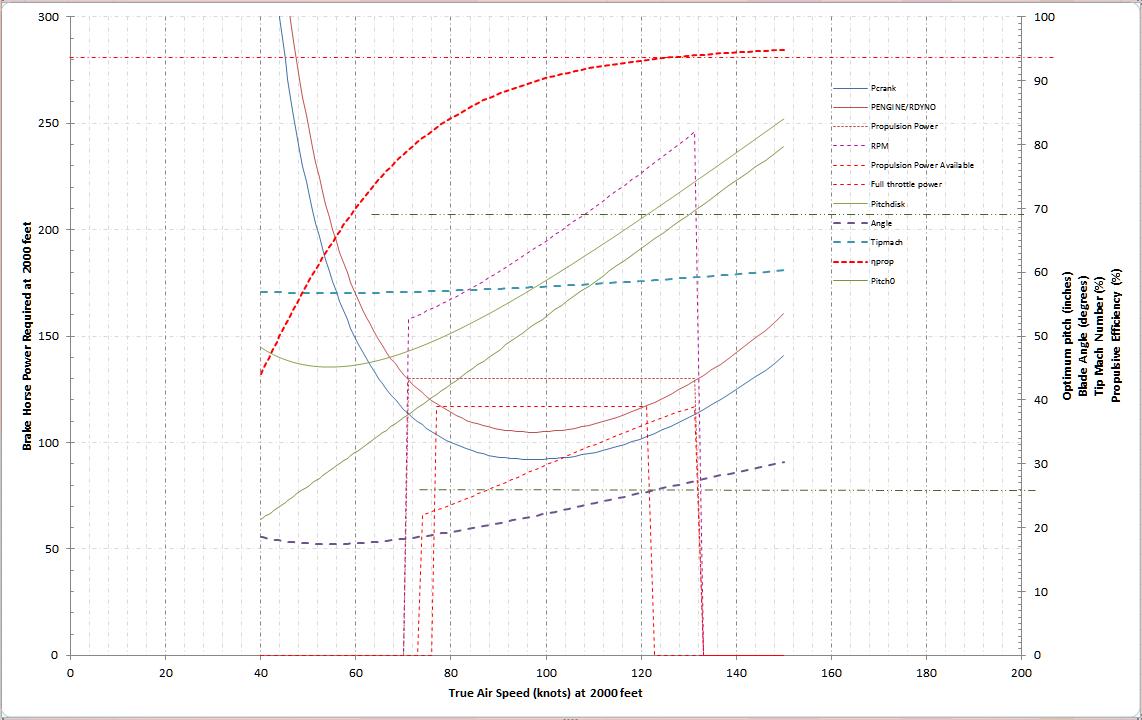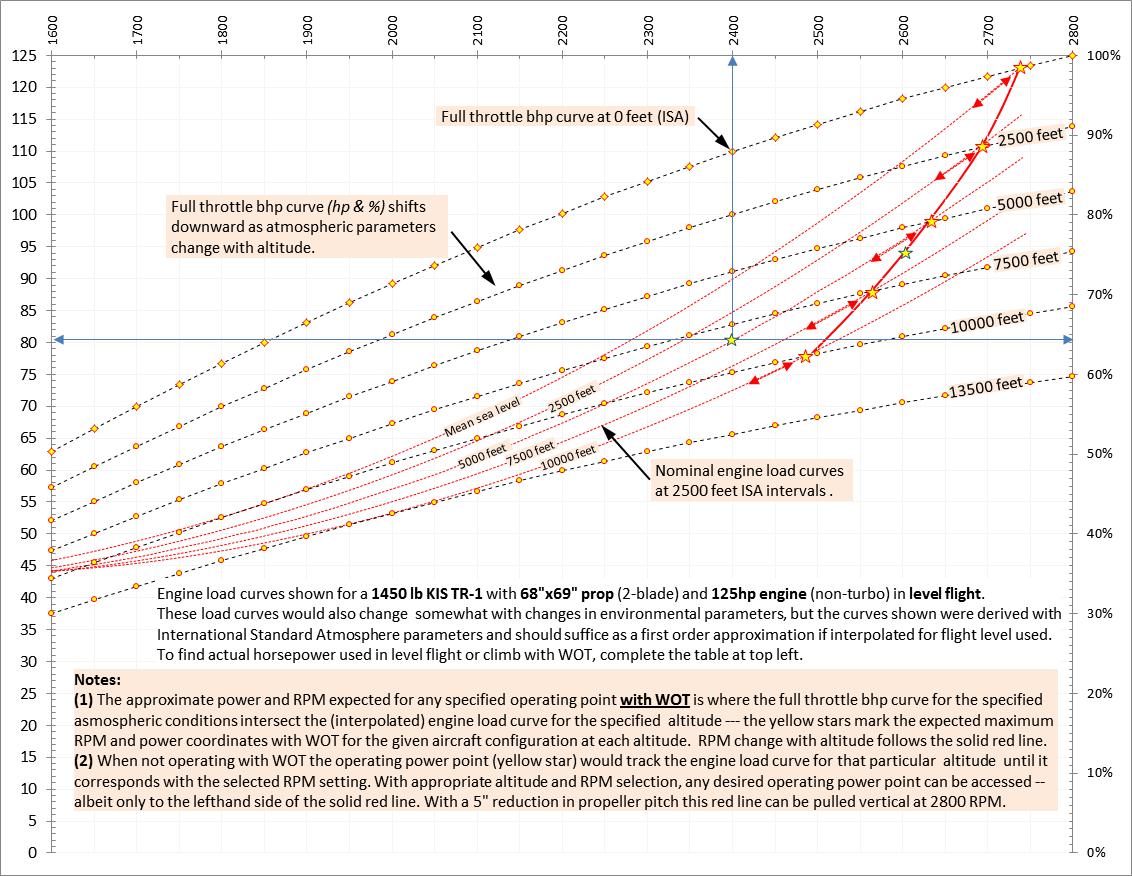 |
Matronics Email Lists
Web Forum Interface to the Matronics Email Lists
|
| View previous topic :: View next topic |
| Author |
Message |
BlueSkyFlier
Joined: 27 Jan 2011
Posts: 74
Location: UK
|
 Posted: Tue Mar 15, 2011 11:49 am Post subject: Re: KIS TR-1 Propeller Posted: Tue Mar 15, 2011 11:49 am Post subject: Re: KIS TR-1 Propeller |
 |
|
And by way of contrast to the above performance in sixty degree turn at 2000 feet, below a 55% degree turn at 3500 feet.
Because the cosine function goes to infinity at 90 degrees, don't underestimate how quickly things can get out of hand once you pass the 55 degree mark  ) )
Regards,
Alfred
| | - The Matronics KIS-List Email Forum - | | | Use the List Feature Navigator to browse the many List utilities available such as the Email Subscriptions page, Archive Search & Download, 7-Day Browse, Chat, FAQ, Photoshare, and much more:
http://www.matronics.com/Navigator?KIS-List |
|
_________________
_________________________________________ |
|
| Back to top |
|
 |
BlueSkyFlier
Joined: 27 Jan 2011
Posts: 74
Location: UK
|
 Posted: Tue Mar 15, 2011 11:52 am Post subject: Re: KIS TR-1 Propeller Posted: Tue Mar 15, 2011 11:52 am Post subject: Re: KIS TR-1 Propeller |
 |
|
Oops! finger trouble.
Attachment which should been above now attached ...
| | - The Matronics KIS-List Email Forum - | | | Use the List Feature Navigator to browse the many List utilities available such as the Email Subscriptions page, Archive Search & Download, 7-Day Browse, Chat, FAQ, Photoshare, and much more:
http://www.matronics.com/Navigator?KIS-List |
|
| Description: |
|
| Filesize: |
112.78 KB |
| Viewed: |
3413 Time(s) |

|
_________________
_________________________________________ |
|
| Back to top |
|
 |
galinhdz(at)gmail.com
Guest
|
 Posted: Tue Mar 15, 2011 12:45 pm Post subject: KIS TR-1 Propeller Posted: Tue Mar 15, 2011 12:45 pm Post subject: KIS TR-1 Propeller |
 |
|
Thanks. I have a KIS4 so it will be a little different but overall the
same principal applies
On Monday, March 14, 2011, BlueSkyFlier <bleuskyfly(at)teledynamix.com> wrote:
| Quote: |
Chuckle chuckle ... [Laughing]
Hi Galin. I was thinking of you when I did the write-up because I did previously say to you that a 3-blade prop is rarely if ever better than the 2-blade -- that statement still holds if both prop types have the same pitch.
In such case the one advantage of the 3-blade is that the lower power loading per blade reduces the lift coefficent on the blades. Therefore the 3-blade stops cavitating (starts to 'bite' properly) at lower forward speed than a 2-blade generating the same thrust. Takeoff acceleration therefore benefits. The price to pay for that benefit is the higher parasitic drag of the 3-blade prop.
In any case, reducing the propeller pitch is what really makes the difference and is essential to release the extra RPM needed to tap into the top end of the 'full throttle' curves at any % remaining power. The parasitic drag penalty is offset by reducing the diameter accordingly.
One important observation from these studies is that steeply banked turns should be given a wide berth in the KIS TR-1 if you have less than 130 hp up front coupled with a propeller pitch in the high 60"s. Anything more than 55 degree bank has the potential to really spoil you day - and everyone else's too.
[Bonbons for those who spot the obvious little booboo in two of the labels on the diagram  )] )]
Cheers,
Alfred
--------
_________________________________________
Read this topic online here:
http://forums.matronics.com/viewtopic.php?p=333836#333836
|
| | - The Matronics KIS-List Email Forum - | | | Use the List Feature Navigator to browse the many List utilities available such as the Email Subscriptions page, Archive Search & Download, 7-Day Browse, Chat, FAQ, Photoshare, and much more:
http://www.matronics.com/Navigator?KIS-List |
|
|
|
| Back to top |
|
 |
BlueSkyFlier
Joined: 27 Jan 2011
Posts: 74
Location: UK
|
|
| Back to top |
|
 |
BlueSkyFlier
Joined: 27 Jan 2011
Posts: 74
Location: UK
|
 Posted: Tue Mar 15, 2011 2:02 pm Post subject: Re: KIS TR-1 Propeller Posted: Tue Mar 15, 2011 2:02 pm Post subject: Re: KIS TR-1 Propeller |
 |
|
Just before I close the cupboard door ...
From postings earlier in this thread it appears that some may be under the impression that opening up the throttle when using less than top RPM will give immediate access to power. That is a dangerous notion not to be trifled with.
Please be aware that once your RPM has dropped - there is no guarantee that you will be able to regain RPM (i.e. power). Propeller loading and remaining available power alone will determine if rpm will increase again or not.
For example, in the above diagram for 55 degree turn at 3500 feet the full throttle power at 3000 feet (for 125 hp engine) is shown as the lowermost diagonal rising line between 70 and 132 knots on the chart. Once the RPM has dropped below 2000 and the speed below 100 kt the load on the propeller will not allow it to speed up again even if you push the throttle to the wall - unless you can sacrifice altitude to reduce the load on the propeller.
The true (hidden) meaning of the 'full throttle' power curve lies therein that - despite full throttle - you can not access all the power your engine can produce at that altitude unless your propeller loading is such that it allows rpm to increase. And if you increase the prop load by trying to make the plane go higher you lose even more power. You all know the scenario ...
That is why it is best to avoid these areas where the 'full throttle' power dips below the power required to sustain level flight.
Fair winds ...
- Alfred
| | - The Matronics KIS-List Email Forum - | | | Use the List Feature Navigator to browse the many List utilities available such as the Email Subscriptions page, Archive Search & Download, 7-Day Browse, Chat, FAQ, Photoshare, and much more:
http://www.matronics.com/Navigator?KIS-List |
|
_________________
_________________________________________ |
|
| Back to top |
|
 |
BlueSkyFlier
Joined: 27 Jan 2011
Posts: 74
Location: UK
|
 Posted: Sat Mar 26, 2011 1:27 pm Post subject: Re: KIS TR-1 Propeller Posted: Sat Mar 26, 2011 1:27 pm Post subject: Re: KIS TR-1 Propeller |
 |
|
So how does one determine at what power level the aircraft is operating at any given time?
Most of us fly around with basic instrumentation, so the answer is not immediately obvious (be that for flight with WOT or not). Whilst investigating the question I collated information which may be of general interest to KIS TR-1 owners. The diagram below illustrates in general how to estimate with reasonable accuracy the amount of engine power used at any given RPM and altitude (with % of power on the right hand scale). For some readers this may be old news â but being relatively new to the game I found the exercise quite interesting and though it worth sharing the results. (The normal disclaimers apply of course  ) )
For the example depicted in the diagram, 65% of rated power is used in level flight at 5000 feet with the throttle backed off to 2400 RPM. When the throttle is pushed wide open (in level flight only) the operating point jumps immediately to the intersection of the 2400 RPM line with the full throttle bhp curve for 5000 feet. Then the operating point moves to the right along that full throttle bhp curve as RPM increases up to the maximum of approx 2630 (at the yellow star for 5000 feet).
As a 2nd example, to operate at 75% of rated power (94 hp) with WOT one would look for ~2600 RPM â which should be possible at ~6250 feet. (this spot is marked on the diagram and is easily found by tracking leftward at the 75% power level)
When climbing with WOT, the solid red line (and yellow stars) shift to the left along the full throttle bhp curves as RPM decreases until the stability point for that climb rate is reached. When throttle is closed in level flight the operating point tracks down to the left along the engine load curve for that particular altitude until it aligns with the selected RPM setting. The engine load curves would change for a different propeller and changes in aircraft weight, but the principles remain the same.
The earlier part of this thread described the performance effect of reducing the propeller pitch. The diagram attached herewith illustrates performance derived from the integrated airframe and propeller model for a KIS TR-1 with a 68â x 69â propeller. As can be seen from the slope of the solid red line, such a âcruiseâ propeller will steadily diminish oneâs ability access to residual engine power as altitude increases. This makes it easy to control cruise power levels by simply flying with WOT at a suitable altitude.
However, for those of us who sometimes need to operate fully loaded from âhot & highâ airfields this is not a suitable performance profile. When taking off from an airfield with a higher density altitude it is evidently desirable to be able to access every last drop of available power the engine can still crank out at that level. So, in that case one would instead want to use a propeller configuration for which the solid red line in the diagram below drops down vertically at the maximum rated RPM. As previously described a 61â x 64â propeller would enable this objective to be met up to density altitudes in excess of 8000 feet (with ~6 kts sacrifice in top speed).
| | - The Matronics KIS-List Email Forum - | | | Use the List Feature Navigator to browse the many List utilities available such as the Email Subscriptions page, Archive Search & Download, 7-Day Browse, Chat, FAQ, Photoshare, and much more:
http://www.matronics.com/Navigator?KIS-List |
|
| Description: |
|
| Filesize: |
198.42 KB |
| Viewed: |
3342 Time(s) |

|
_________________
_________________________________________ |
|
| Back to top |
|
 |
|
|
You cannot post new topics in this forum
You cannot reply to topics in this forum
You cannot edit your posts in this forum
You cannot delete your posts in this forum
You cannot vote in polls in this forum
You cannot attach files in this forum
You can download files in this forum
|
Powered by phpBB © 2001, 2005 phpBB Group
|




